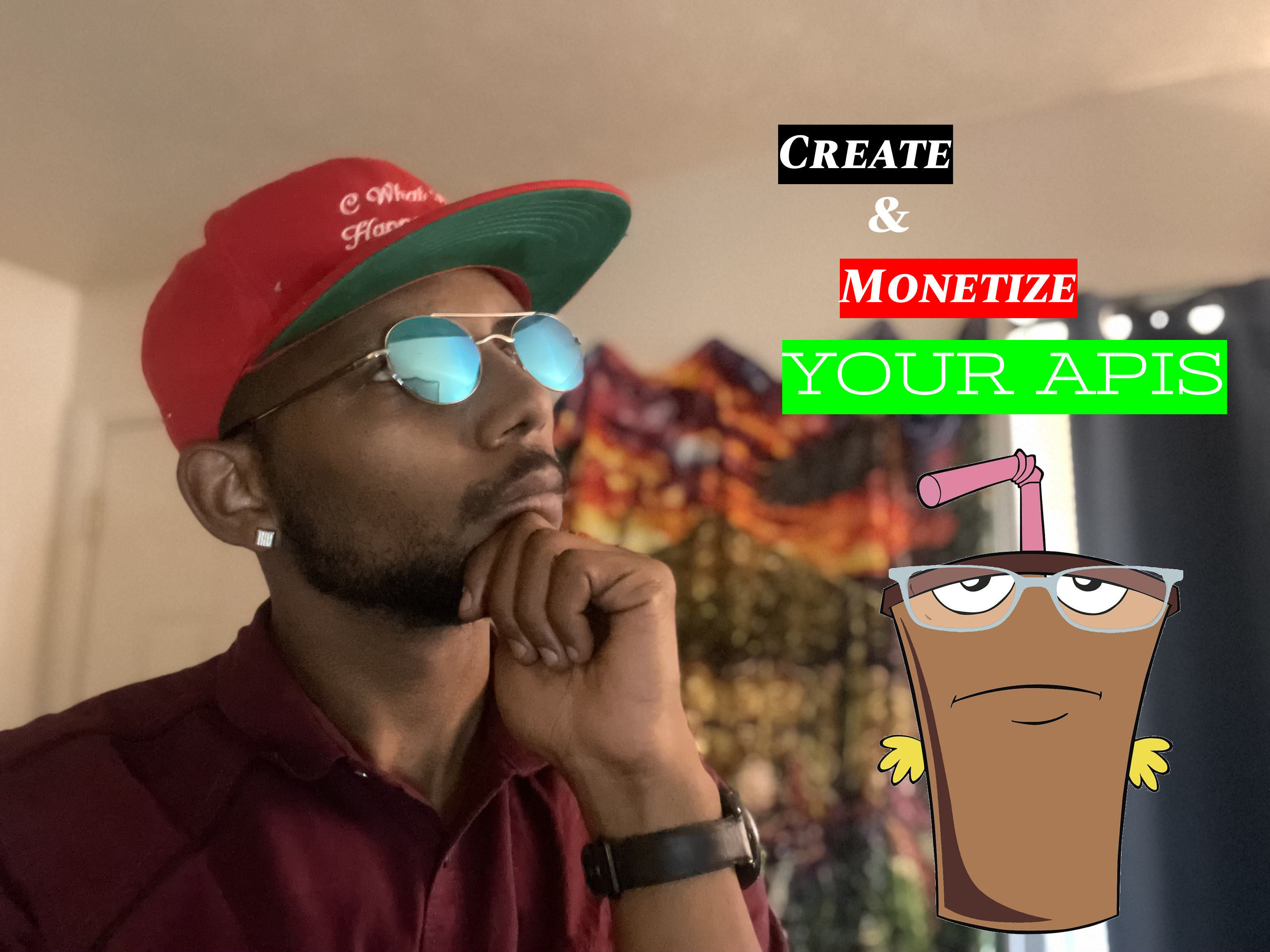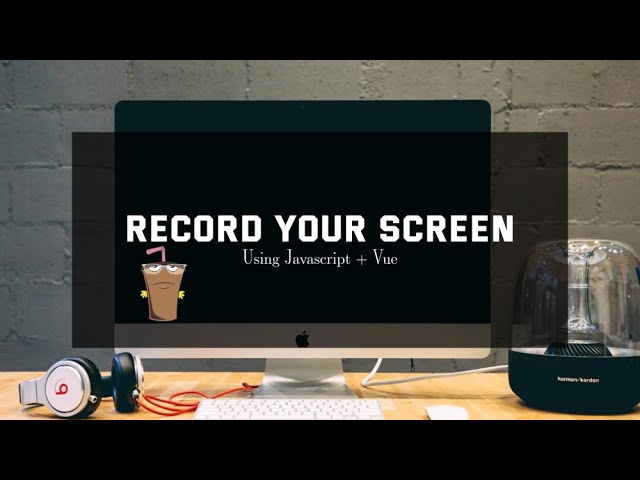After a long hiatus, my trust generator app is back online. Starting a trust was one of the best financial things I ever did for myself and my family. Check out Trusts Generator and set up a trust for your family today.
Category: Patreon
Today I Began Teaching My Kids How To Code
Those of you who have been following my content creation journey since the beginning may remember my children being on my live streams. They are finally learning how to code this summer by making video games! Follow us over the next couple of months as we make VR games using the Babylon.js framework.
Patrons get behind-the-scenes access to the source code and special content as I teach these two mini geniuses. I continue to thank you all who have supported me, the channel, and the kid coding community.
So what is Babylon.js? It is an amazing Javascript 3D video game framework that uses WebXR and WebGPU technologies to enable us to make web games for the Oculus Quest! Ethan and Moriah will be creating VR dinosaur and unicorn Oculus games this summer. I really hope that if you have kids or know of kids who want to code this summer please have them subscribe to my Youtube channel and check the channel Monday – Friday this summer and participate in the live stream! All you need is a code editor and a web browser!
I created a repository on Github for the adventures you can follow along at https://github.com/mastashake08/dinosaur-unicorn-babylon-vr please feel free to fork and see the daily code updates!
New iOS App Out! Kids Summer Class Starting Soon!
What Kind Of App Do You Guys Want To See
Monetizing Your APIs – Selling Shovels To Goldminers

Monetizing Your API
This is a strategy many solo software entrepreneurs fail to utilize when creating their app portfolio. Often when I do my one on one consultations with app freelancers they describe this beautiful, eloquent ecosystem of software. Web app, mobile app, backend everything is there. They always ask how they can increase their revenue. I in turn always ask them “Have you monetized your API?” The look of shock always lets me know they never thought of it. The fact of the matter is, API monetization can be your most long-tailed stream of app income! If your API service is a critical part of another app, and that app lives on for 20 years, you have a lifetime customer, multiple that by 100 and do the math. APIs are a multi-billion-dollar industry and companies will pay as long as the service works and the data is there!
Why You Should Monetize Your API?
Think about it for a moment. Your API is the powerhouse of your applications. Without it, your product wouldn’t exist in the form it is today. If it solved a business need and there is an opportunity to solve others at a cost, then you should exploit that opportunity. By monetizing your API you can make residual money for your application being the backbone of another application that allows them to make money. While I am a fan of open-source software (I contribute to it daily) I also know that these tech companies make billions off of free software whilst the creators struggle to pay rent! If you have a product that other companies need, make them pay. If you still want to offer it free to hobbyist/solo devs? Rate limit the API and reduce scopes! In fact, a freemium model will ensure you have a consistent audience using your service which helps your overall brand!
Also by making your API accessible you open up your app to use cases you wouldn’t even dream or think of! How you envision your API usage will differ vastly from how your users use your API. These different use cases translates to more residual income for you and your business! This is the power of working smarter and not harder. Just provide the tools that OTHER people need to get their job done and you will have stability in the market. APIs are not as glamourous as the front end, but they can and often do make more money in the long run.
How Do I Sell My API?
When it comes to monetizing and selling access to your API, there are two models: in-app billing, using an API marketplace. In the first model, you would be using something like Stripe to charge either monthly, yearly, or per-use access. Using this model you have more direct control over how much make and charge as well as more flexibility with the use case. The major drawback is that you are responsible for the billing software and tracking usage. The alternative is to use an API marketplace such as RapidAPI. By using an API marketplace you get access to millions of potential customers who are looking for your solution! Honestly, if you are like me and have a much of micro-apis to monetize then putting them for sale on one platform would be less of a headache as well. Ultimately the choice is yours and I advocate you do research to find the best solution for your API and business model. Speaking of APIs, if you are an API developer and you want to have a one-on-one to get the most out of your API business, schedule a time here.
Join The #CodeLife Newsletter
Get weekly updates on the blog and other happenings in the #CodeLife brand!
I Wrote A Free Online Screen Recorder
Creating A Screen Recorder and Email Microservice With Vue.js + MediaRecorder API and Laravel PHP Framework

Recording Your Screen With Vue.js and MediaRecorder API
Last year I wrote a screen recording progressive web app with Vue.js and the MediaRecorder API. This was a simple app that allowed you to record your current screen and after screen sharing, a file would be created with the File API and downloaded to your system. Well I decided to update it this week and add email functionality. The reason? I needed to send a screen recording to a client and figured might as well add the functionality in the app and save time; as opposed to downloading the file then opening Gmail, then sending the email. Here is a video for the first part.
Adding The Email Service
Obviously, you all know I love Laravel! I decided to create a Laravel 8 API microservice with a single post route that takes the video file and email address and sends a notification to said email address. I then had to edit the Vue application to make a network call to the microservice when the user wants to email the file.
Getting To The Code!
Let’s start off with the Vue.js application. Create a new application in your terminal
vue create screen-recorderThe first thing we are going to do is add our dependencies, which in this case is vue-tailwind for ease of working with TailwindCSS, gtag for working with Google Analytics ( I like to know where my users are coming from), Google Adsense ( a brother gotta eat) and vue-script2.
cd screen-recorder; npm install --save vue-tailwind vue-script2 vue-gtag vue-google-adsenseAfter installing the dependencies, head over to main.js and let’s setup the application
import Vue from 'vue'
import App from './App.vue'
import VueTailwind from 'vue-tailwind'
import Ads from 'vue-google-adsense'
import VueGtag from "vue-gtag";
import "tailwindcss/tailwind.css"
Vue.use(VueGtag, {
config: { id: "your google analytics id" }
});
Vue.use(require('vue-script2'))
Vue.use(Ads.Adsense)
const settings = {
TInput: {
classes: 'form-input border-2 text-gray-700',
variants: {
error: 'form-input border-2 border-red-300 bg-red-100',
// ... Infinite variants
}
},
TButton: {
classes: 'rounded-lg border block inline-flex items-center justify-center block px-4 py-2 transition duration-100 ease-in-out focus:border-blue-500 focus:ring-2 focus:ring-blue-500 focus:outline-none focus:ring-opacity-50 disabled:opacity-50 disabled:cursor-not-allowed',
variants: {
secondary: 'rounded-lg border block inline-flex items-center justify-center bg-purple-500 border-purple-500 hover:bg-purple-600 hover:border-purple-600',
}
},
TAlert: {
classes: {
wrapper: 'rounded bg-blue-100 p-4 flex text-sm border-l-4 border-blue-500',
body: 'flex-grow text-blue-700',
close: 'text-blue-700 hover:text-blue-500 hover:bg-blue-200 ml-4 rounded',
closeIcon: 'h-5 w-5 fill-current'
},
variants: {
danger: {
wrapper: 'rounded bg-red-100 p-4 flex text-sm border-l-4 border-red-500',
body: 'flex-grow text-red-700',
close: 'text-red-700 hover:text-red-500 hover:bg-red-200 ml-4 rounded'
},
// ... Infinite variants
}
},
// ... The rest of the components
}
Vue.use(VueTailwind, settings)
Vue.config.productionTip = false
new Vue({
render: h => h(App),
}).$mount('#app')
This file basically bootstraps the application with all the Google stuff and the Tailwind CSS packaging. Now let’s open up the App.vue and replace with the following:
<template>
<div id="app">
<img alt="J Computer Solutions Logo" src="./assets/logo.png" class="object-contain h-48 w-full">
<p>
Record your screen and save the file as a video.
Perfect for screen recording for clients. Completely client side app and is installable as a PWA!
</p>
<p>
Currently full system audio is only available in Windows and Chrome OS.
In Linux and MacOS only chrome tabs are shared.
</p>
<t-modal
header="Email Recording"
ref="modal"
>
<t-input v-model="sendEmail" placeholder="Email Address" name="send-email" />
<template v-slot:footer>
<div class="flex justify-between">
<t-button type="button" @click="$refs.modal.hide()">
Cancel
</t-button>
<t-button type="button" @click="emailFile">
Send File
</t-button>
</div>
</template>
</t-modal>
<div class="mt-5">
<t-button v-on:click="getStream" v-if="!isRecording"> Start Recording 🎥</t-button>
<t-button v-on:click="stopStream" v-else> Stop Screen Recording ❌ </t-button>
<t-button v-on:click="download" v-if="fileReady" class="ml-10"> Download Recording 🎬</t-button>
<t-button v-on:click="$refs.modal.show()" v-if="fileReady" class="ml-10"> Email Recording 📧</t-button>
</div>
<br>
<Adsense
data-ad-client="ca-pub-xxxxxxxxxx"
data-ad-slot="xxxxxxx">
</Adsense>
</div>
</template>
<script>
export default {
name: 'App',
data() {
return {
isRecording: false,
options: {
audioBitsPerSecond: 128000,
videoBitsPerSecond: 2500000,
mimeType: 'video/webm'
},
displayOptions: {
video: {
cursor: "always"
},
audio: {
echoCancellation: true,
noiseSuppression: true,
sampleRate: 44100
}
},
mediaRecorder: {},
stream: {},
recordedChunks: [],
file: null,
fileReady: false,
sendEmail: '',
url: 'https://screen-recorder-micro.jcompsolu.com'
}
},
methods: {
async emailFile () {
try {
const fd = new FormData();
fd.append('video', this.file)
fd.append('email', this.sendEmail)
await fetch(`${this.url}/api/email-file`, {
method: 'post',
body: fd
})
this.$refs.modal.hide()
this.showNotification()
} catch (err) {
alert(err.message)
}
},
setFile (){
this.file = new Blob(this.recordedChunks, {
type: "video/webm"
});
this.fileReady = true
},
download: function(){
this.$gtag.event('download-stream', {})
var url = URL.createObjectURL(this.file);
var a = document.createElement("a");
document.body.appendChild(a);
a.style = "display: none";
a.href = url;
var d = new Date();
var n = d.toUTCString();
a.download = n+".webm";
a.click();
window.URL.revokeObjectURL(url);
this.recordedChunks = []
this.showNotification()
},
showNotification: function() {
var img = '/logo.png';
var text = 'If you enjoyed this product consider donating!';
navigator.serviceWorker.getRegistration().then(function(reg) {
reg.showNotification('Screen Recorder', { body: text, icon: img, requireInteraction: true,
actions: [
{action: 'donate', title: 'Donate',icon: 'logo.png'},
{action: 'close', title: 'Close',icon: 'logo.png'}
]
});
});
},
handleDataAvailable: function(event) {
if (event.data.size > 0) {
this.recordedChunks.push(event.data);
this.isRecording = false
this.setFile()
} else {
// ...
}
},
stopStream: function() {
this.$gtag.event('stream-stop', {})
this.mediaRecorder.stop()
this.mediaRecorder = null
this.stream.getTracks()
.forEach(track => track.stop())
},
getStream: async function() {
try {
this.stream = await navigator.mediaDevices.getDisplayMedia(this.displayOptions);
this.mediaRecorder = new MediaRecorder(this.stream, this.options);
this.mediaRecorder.ondataavailable = this.handleDataAvailable;
this.mediaRecorder.start();
this.isRecording = true
this.$gtag.event('stream-start', {})
} catch(err) {
this.isRecording = false
this.$gtag.event('stream-stop', {})
alert(err);
}
}
},
mounted() {
let that = this
Notification.requestPermission().then(function(result) {
that.$gtag.event('accepted-notifications', { result: result })
});
}
}
</script>
<style>
#app {
font-family: Avenir, Helvetica, Arial, sans-serif;
-webkit-font-smoothing: antialiased;
-moz-osx-font-smoothing: grayscale;
text-align: center;
color: #2c3e50;
margin-top: 60px;
}
</style>
Laravel API
Start off by creating a new Laravel application. My setup uses Docker and MacOS
curl -s "https://laravel.build/screen-recorder-api" | bashThe first thing we want to do is create our File model and migration. The File model will hold the name, mime_type and size of the file along with the email where the file is to be sent. Note! We are NOT storing the file, simply passing it through to the email.
cd screen-recorder-api; ./vendor/bin/sail up -d; ./vendor/bin/sail artisan make:model -m FileOpen up the app/Models/File.php file and replace the contents with the following:
<?php
namespace App\Models;
use Illuminate\Database\Eloquent\Factories\HasFactory;
use Illuminate\Database\Eloquent\Model;
use Illuminate\Notifications\Notifiable;
class File extends Model
{
use HasFactory, Notifiable;
public $guarded = [];
}
Now open up the migration file and edit it to be the following:
<?php
use Illuminate\Database\Migrations\Migration;
use Illuminate\Database\Schema\Blueprint;
use Illuminate\Support\Facades\Schema;
class CreateFilesTable extends Migration
{
/**
* Run the migrations.
*
* @return void
*/
public function up()
{
Schema::create('files', function (Blueprint $table) {
$table->id();
$table->string('name');
$table->string('email');
$table->string('size');
$table->string('mime_type');
$table->timestamps();
});
}
/**
* Reverse the migrations.
*
* @return void
*/
public function down()
{
Schema::dropIfExists('files');
}
}
Now let’s create a new notification called SendFile. This notification will send an email with the file attached to it to the user. Let’s create the notification and fill out the contents!
./vendor/bin/sail artisan make:migration SendFile<?php
namespace App\Notifications;
use Illuminate\Bus\Queueable;
use Illuminate\Contracts\Queue\ShouldQueue;
use Illuminate\Notifications\Messages\MailMessage;
use Illuminate\Notifications\Notification;
class SendFile extends Notification
{
use Queueable;
public $file;
/**
* Create a new notification instance.
*
* @return void
*/
public function __construct($file)
{
//
$this->file = $file;
}
/**
* Get the notification's delivery channels.
*
* @param mixed $notifiable
* @return array
*/
public function via($notifiable)
{
return ['mail'];
}
/**
* Get the mail representation of the notification.
*
* @param mixed $notifiable
* @return \Illuminate\Notifications\Messages\MailMessage
*/
public function toMail($notifiable)
{
return (new MailMessage)
->line('Your Screen Recording')
->line('Thank you for using our application!')
->attach($this->file, ['as' => 'jcompsolu-screen-record.webm', 'mime' => 'video/webm']);
}
/**
* Get the array representation of the notification.
*
* @param mixed $notifiable
* @return array
*/
public function toArray($notifiable)
{
return [
//
];
}
}
You will notice we set the file in the constructor then attach it using the attach() method on the MailMessage object. Now that is done let’s create the API route, and send our notifications! Open up routes/api.php and edit it to be so:
<?php
use Illuminate\Http\Request;
use Illuminate\Support\Facades\Route;
use App\Models\File;
use App\Notifications\SendFile;
/*
|--------------------------------------------------------------------------
| API Routes
|--------------------------------------------------------------------------
|
| Here is where you can register API routes for your application. These
| routes are loaded by the RouteServiceProvider within a group which
| is assigned the "api" middleware group. Enjoy building your API!
|
*/
Route::middleware('auth:sanctum')->get('/user', function (Request $request) {
return $request->user();
});
Route::post('/email-file', function (Request $request) {
$uploadedFile = $request->video;
$file = File::Create([
'name' => $uploadedFile->getClientOriginalName(),
'mime_type' => $uploadedFile->getClientMimeType(),
'size' => $uploadedFile->getSize(),
'email' => $request->email
]);
$file->notify(new SendFile($uploadedFile));
return response()->json($file);
});
When you upload a file in Laravel it is an instance of UploadedFile class and has several file related methods associated with it! Using these methods we can get the name, size and mimetype of the uploaded file! After setting the model and saving in the database we send a notification with the uploaded file! Test it yourself here!
Conclusion
The vast majority of the apps I create and monetize, start off as an app that I use myself to make my life or work easier! This is the basis of #CodeLife and is the reason I was able to retire early for a few years. If this tutorial helped you please consider subscribing to my Youtube channel and subscribing to the blog and leave a comment if you want me to add new functionality!
Coding Class 08-17-2021


Class today was great! Attendance was a little low due to being closed for two weeks thanks to COVID-19 🙁
Today the kids got their first homework assignment to build out their home page for their mobile app! If you are interested in following along check out https://github.com/mastashake08/ctct-voice-recorder and head over to the Wiki!
We reached our first patron goal of 10 patrons! This is great because now I can outsource a videographer to help me livestream the classes on my Youtube channel! Thank you all for your help and I ask that you help spread this and encourage your friends, family and co workers to do the same!

 Unlock with Patreon
Unlock with Patreon